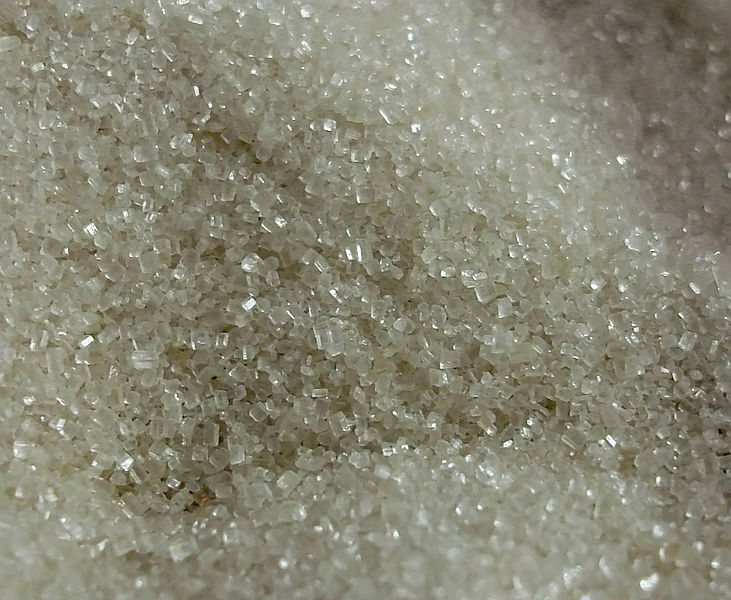When too much sugar is WAY too much sugar
On your way to work in the morning, you stop at Starbucks for your favorite morning brew: a Tall Coffee Frappuccino, Light, because you are watching your diet. You also get a blueberry muffin or an 8-grain roll for breakfast. You work hard all morning, so for lunch you drive to Chipotle for a chicken burrito salad topped with white rice, chili salsa, cheese and vinaigrette dressing. Feeling refreshed, you work until 4pm, run to the grocery store, and finish off the evening with a homemade spaghetti. Because you ate pretty well today, you figure you’ll top off the night with a glass of Mott’s 100% Apple juice, and maybe 1 scoop of Haagen-Daz Vanilla Frozen yogurt. Sounds decently healthy, right?
Let’s add up the sugar you had today:
- Tall Frappuccino Light: 18 grams of sugar
- 8-Grain Roll: 18 grams of sugar
- Chipotle meal: 17 grams of sugar.
- Homepage spaghetti: 10 grams of sugar (depending on the sauce you buy).
- Mott’s 100% Apple Juice: 28 grams of sugar
- Haagen-Daz Vanilla Frozen yogurt: 22 grams of sugar
Total: 113 grams of sugar, or 26 teaspoons.
And if you happened to drink a 12-oz Coke with your lunch, that would be an extra 39 grams of sugar.
We all know that we probably consume too much sugar in our day-to-day lives. But do we really know? As a person who is generally health-conscious, I can vouch for the fact that even healthy individuals will be surprised by the actual recommended amount of dietary sugar. Set aside gluten-free and diets that advocate staying away from complex carbohydrates, and chew on this:
In 2009, the American Heart Association (AHA) published a scientific statement to the effect that excessive consumption of sugars has been linked with metabolic abnormalities and health conditions such as obesity and cardiovascular disease. According to the study, “Soft drinks and other sugar-sweetened beverages are the primary source of added sugars in Americans’ diets.”
According to their findings, the AHA recommended a “specific upper limit” of intake for added sugars. The AHA defines added sugars as “sugars and syrups added to foods during processing or preparation…” The AHA recommends no more than 5-9 teaspoons of added sugars every day, or approximately 20-37 grams daily for the average adult. Considering that a 12-ounce can of Coke has 39 grams of sugar, or 140 calories from sugar alone, that 5-9 teaspoon limit seems pretty small.
The study also cited research showing that high-fructose corn syrup (infamously found in many sweet beverages and sodas) has been playing a role in insulin resistance, obesity, hypertension and type 2 diabetes. The fact that high-fructose corn syrup is a predominant form of sweetener in today’s beverages (sodas, fruit juices, etc.) makes the impact of this added sugar even worse, as we tend to take in more excessive energy when this energy is in the form of a liquid instead of a solid. In other words, we don’t easily get ‘full’ from drinking high-calorie sweetened drinks.
The sugar allowance for children is even lower – an upper limit of 16 grams for children 4 to 8 years old. This means, yes, that a child that age who drinks a Sprite or Coke at dinner is consuming two and a half times more sugar in a sitting than they should have during the entire day!
And Americans are consuming more calories from sugar today than they were 20-30 years ago. A 2013 study in the American Journal of Public Health reported that body mass index, or BMI, increased as added-sugar intake increased in both men and women. Between the early 1980s and the early 2000s, the percentage of energy intake from added sugar increased in women by 54%. The study concluded that limiting added-sugar intake should be part of energy balance strategies in response to today’s “obesity epidemic.”
Sobering, even for a ‘health nut.’
Increases in the intake of soft drinks, fruit drinks, desserts, sugars and jellies, candy, and ready-to-eat cereals largely account for the increased energy intake from sugars/added sugars. Soft drinks and other sugar-sweetened beverages are the primary source of added sugars in Americans’ diets. – 2009 AHA Study
But why do we love sugar so much? According to the 2009 AHA study, the pleasure center of the brain – the ventral tegmental area – is involved in the pathways that motivate the reward of food intake. Excessive sugar intake may even have effects on the brain similar to the effects of opiates such as morphine, triggering the brain to crave sugary substances beyond actual energy needs (you take in more calories from sugar than your body needs). According to a 2002 study in Physiology & Behavior:
It is proposed that this brain mechanism was beneficial in evolutionary development for ensuring the consumption of relatively scarce, high-energy food sources. However, in modern times, with unlimited supplies of high-calorie food, it has contributed to the present epidemic of obesity.
So it would seem that the consumption of sugar triggers more consumption of sugar, and more energy intake in general from ‘feel good’ foods like soda, ice cream, etc. (insert your fatty or sugary comfort food here). Like a drug habit, our brains just can’t get enough.
So what can we do to cut our sugar? For one, cut out the sodas. I no longer drink most sweetened sodas, juices or candies, because I am allergic to corn, meaning no high-fructose corn syrup for me. That elimination of high fructose corn syrup from my diet cuts out a lot of sugar automatically. I try to eat fresh fruit only, and minimally sweetened dairy products such as Greek yogurt.
But many foods contain ‘hidden’ amounts of sugar: cereals, salad dressing, fruit cups, sweetened yogurt, pastries (my biggest failing), granola bars, soups, applesauce, even ketchup and many packaged foods.
More on cutting out sugar here and here.
So where does your hidden added sugar come from?



